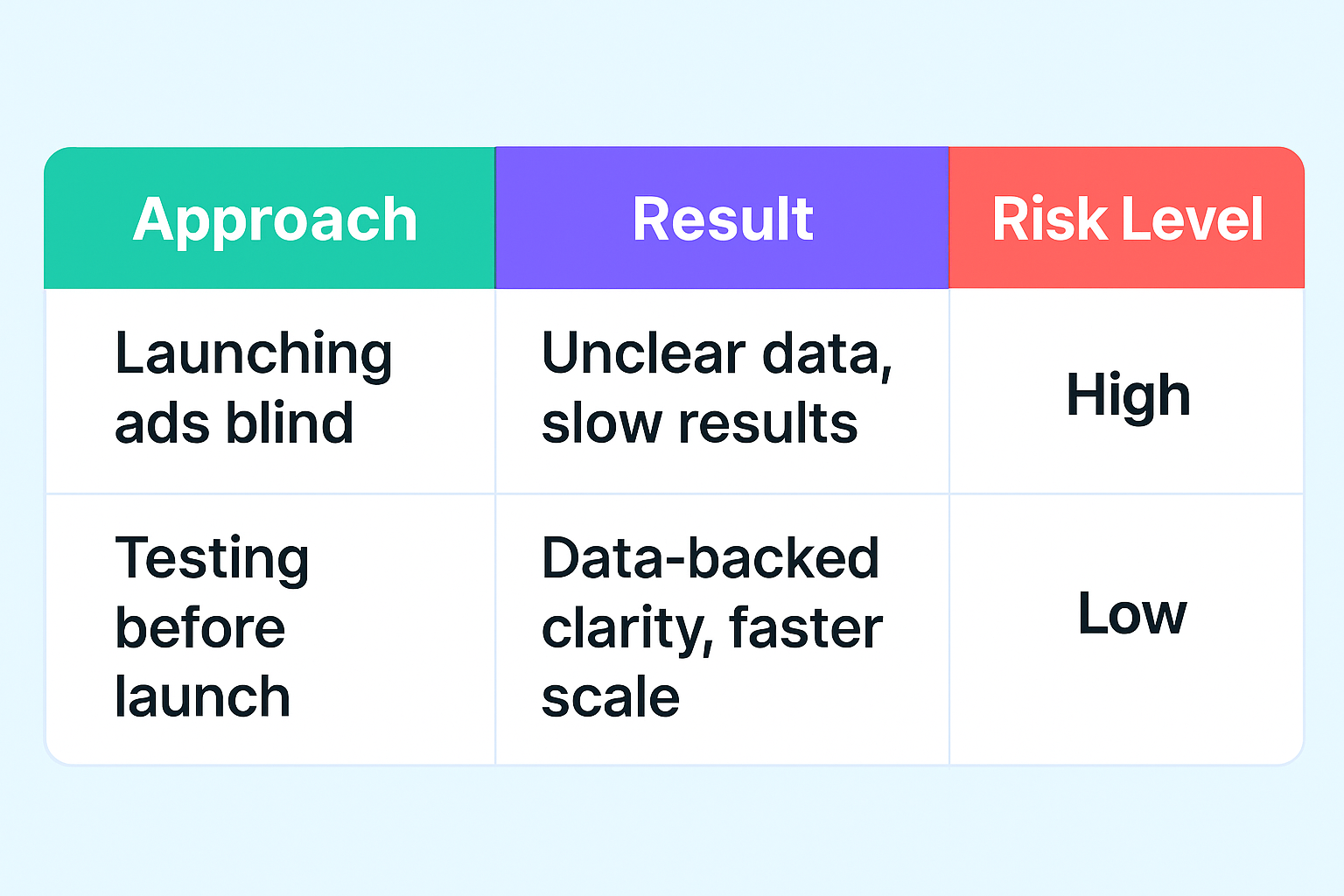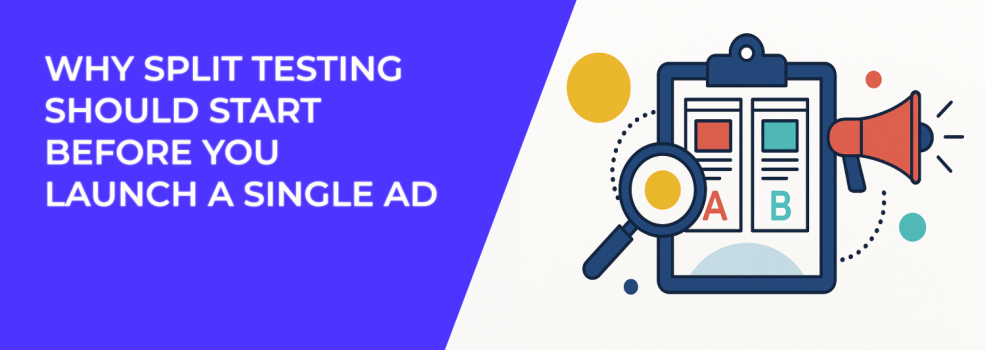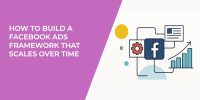Running Facebook and Instagram ads without testing your ideas first? You might as well be lighting money on fire. A/B testing isn't just something you do once your campaign is live. If you want to make data-backed decisions and avoid wasting budget, it needs to begin before you publish anything.
What Most Marketers Get Wrong
A common trap? Launching ads and "seeing what works."

That approach sounds practical, but it often leads to:
-
Mixed data you can't confidently interpret.
-
Poor-performing ads dominating early spend.
-
Delays in performance while waiting for Meta's learning phase to end.
Pre-launch split testing fixes all of that. It helps you avoid costly surprises and sets you up for a faster ramp-up. You don’t just test to "optimize" later. You test to know what not to run in the first place.
What Can You Test Before You Launch?
Here are a few components you can split test early, using low-budget experiments, organic content, or even simple polls:
-
Visual format — video, carousel, static image, Reels.
-
Creative concept — humor vs serious tone, pain point vs aspiration.
-
Hook or headline — question vs statement, curiosity vs clarity.
-
Offer framing — free trial vs demo, discount vs bonus.
-
Call to action — "Learn More" vs "Get Offer."
You can even test these using AI tools to quickly generate ad creatives.
Want ideas for what to test first? Check this out: What to Test First: Creative, Copy or Audience in Facebook Campaigns?
Organic Testing = Low-Risk Validation
Not every test needs paid ads.
In fact, one of the best ways to validate an idea is through organic content. Post two versions of the same visual to your Instagram story. Try different hooks on your Facebook page. Use polls or even emails to gauge which angle or concept resonates more.
You’re not looking for viral content. You're watching for patterns:
-
Which one gets more replies or comments?
-
Which drives more link clicks or shares?
-
Which gets ignored?
Those reactions tell you what to scale — and what to drop before spending a cent.
Test with Micro Campaigns (Not Full Launches)
If you're using paid ads for testing, don't go big right away.
Instead, set up short, low-budget campaigns aimed at getting quick signals. Spend $10–20 per variation, and test on a tightly defined custom or lookalike audience. LeadEnforce can help you build those audiences precisely and quickly.
These micro-tests aren't designed to drive ROI. They're designed to answer a single question: which direction should I bet bigger on?
If one version clearly outperforms the rest in CTR, engagement rate, or cost per result, you’ve got a winner worth scaling.
Target Smarter from the Start
Even the best creative will flop if you’re showing it to the wrong people. So don’t leave targeting as an afterthought.
Before launch, build custom audiences using:
-
Website traffic from specific pages.
-
Engagement from Facebook or Instagram.
-
CRM or email list uploads.
-
Behavioral data from third-party tools.
The better your starting audience, the cleaner your test results.
Need help with that? Here's a great place to start: Facebook Ad Targeting 101: How to Reach the Right Audience
Also: don’t ignore this all-too-common issue during setup — Why You See 'Ad Set May Get Zero' on Facebook and How to Fix It
What Happens If You Don't Test Early?
Here’s what usually happens:
-
You burn budget while stuck in the learning phase.
-
Meta guesses what works and often gets it wrong.
-
You make creative changes mid-flight, resetting performance.
-
You lose momentum and visibility.
On the flip side? Early testing accelerates everything. You feed the algorithm stronger inputs from the start, giving your campaign a clearer runway.
Build a Repeatable Pre-Launch Testing System
If you're serious about results, don’t treat testing as a one-off. Build a system you can repeat across campaigns:
-
Choose one variable to test (headline, visual, offer).
-
Create two to three versions.
-
Use organic posts, stories, or micro-campaigns to gather quick feedback.
-
Kill the underperformers fast.
-
Launch your main campaign with confidence.
This system helps you spot weak ideas before they cost you. It keeps your strategy proactive, not reactive.
Final Thought: Test to Learn, Not Just to Win
Not every test has to deliver a winner. Some will confirm what doesn’t work — and that’s just as valuable.
Think of testing as part of the creative process, not just a performance hack. The insights you get now will sharpen your campaigns long-term.
Looking for better segments to test your next offer on? Try LeadEnforce to build precise audiences before your ads go live.

